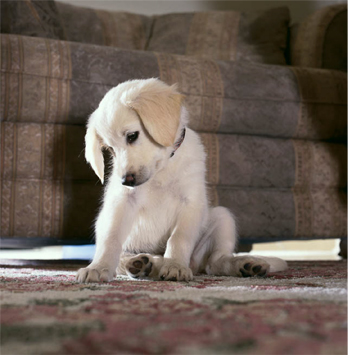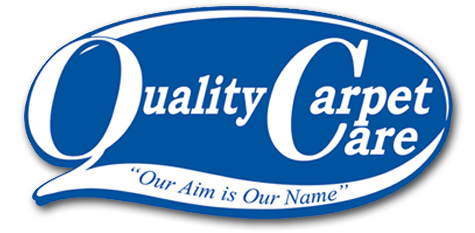Treating Pet Urine Contamination In Carpet

Treating pet urine stains and odors in carpet can be frustrating for pet owners. Most pet owners will try to treat pet stains and odors by themselves. They will spend a lot of money on store bought products from the grocery store and pet stores, only to be disappointed. When all these efforts fail and the odor becomes unbearable, then they will call in the professionals. By the time professionals are called in, the damage may be extensive and in severe cases, untreatable.
Quality Carpet Care treats pet urine stains and odors with a high degree of success. When we receive a pet urine call, customers are informed that a black-light inspection is required to determine the level of pet urine contamination. We perform the inspection with a special black-light and special eyewear that illuminates the urine in the carpet. The urine will glow a fluorescent yellow or green if it is fresh, and a bluish or grayish color if it is old or has been treated previously. In extreme cases, if we feel too much of the carpet surface is affected by urine, we will recommend carpet and pad replacement instead of cleaning. When carpet is replaced, we also recommend applying an anti-bacterial agent to the subfloor and having the subfloor painted with a primer as an odor barrier. Also, carpet pads are now available with enzyme barriers embedded which activate upon becoming damp. The reason most store bought products do not work is because they do not penetrate all the way to the subfloor. The alkali salts in the urine are trapped in the pad and the subfloor, where store bought carpet cleaning systems cannot reach.
When we see a three inch pet stain on the surface we understand that the urine has penetrated into the pad and spread out on the subfloor an area three times greater than what is visible on the surface. A three inch spot on top of the carpet is actually a nine inch spot on the subfloor. Our truck mount cleaning system combined with a subsurface extraction tool has enough lift and airflow to reach the material on the subfloor.
Treating urine identified with a black-light starts with pouring a hot solution of Odor and Stain Remover directly into each stain. The solution follows the path of the urine through the carpet and pad down to the subfloor. The solution will then “dwell” in the carpet, allowing the solution to dissolve and neutralize the alkali salts in the urine. The alkali salts are the parts that give off odor. After a sufficient dwell time, a subsurface extraction tool is placed on the stained area. The tool creates a sealed surface which enables the truck mount system to pull the solution with the dissolved salts off the subfloor, out of the pad and carpet and then into the truck mount waste tank (out of your home).
The next step is cleaning the carpet with hot steam and then applying a professional strength enzyme product. This enzyme is applied two ways. First it is added to the pre-pray solution for cleaning and then it is sprayed topically on to the carpet. In extreme cases, the carpet may be rinsed with several gallons of water and flash extracted (no dwell time) to extract any lingering urine residue. If the carpet still retains some yellow staining, it can be treated with a leave-in oxidizing stain remover.
All of the products used by Quality Carpet Care are industry standard products used in accordance with the manufacturer’s instructions. Beware of any carpet cleaning company that claims to have invented their own chemicals. Non-industry standard solutions invented by a carpet cleaner may void carpet warranties, damage carpet and possibly endanger the occupants of a home.
The cost of professional pet urine remediation is more expensive than standard steam cleaning, but far less than total carpet replacement. Preventing urine contamination is even less expensive.
The best preventative measure a pet owner can take is to limit the animals’ access to areas of the house if they are using the carpet as a bathroom. The use of baby gates, pet doors and training are the most cost effective methods for preventing pet urine contamination. Many pet owners believe installing a pet door would be too expensive, but in reality the cost of a pet door is far less than professional pet urine remediation.

